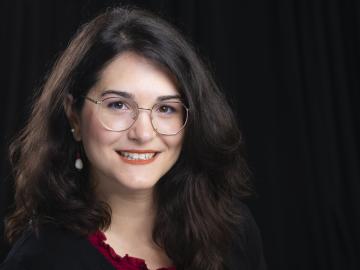Filter News
Area of Research
- (-) Materials (57)
- (-) National Security (12)
- Advanced Manufacturing (1)
- Biology and Environment (29)
- Clean Energy (40)
- Climate and Environmental Systems (1)
- Computational Engineering (1)
- Computer Science (1)
- Fusion and Fission (9)
- Fusion Energy (2)
- Isotope Development and Production (1)
- Isotopes (7)
- Materials Characterization (2)
- Materials for Computing (5)
- Materials Under Extremes (1)
- Neutron Science (17)
- Nuclear Science and Technology (5)
- Quantum information Science (1)
- Supercomputing (27)
News Topics
- (-) Bioenergy (9)
- (-) Biomedical (3)
- (-) Cybersecurity (11)
- (-) Environment (8)
- (-) Fusion (3)
- (-) Isotopes (5)
- (-) Materials (38)
- (-) Microscopy (12)
- 3-D Printing/Advanced Manufacturing (14)
- Advanced Reactors (2)
- Artificial Intelligence (10)
- Biology (5)
- Buildings (2)
- Chemical Sciences (20)
- Climate Change (5)
- Composites (3)
- Computer Science (14)
- Coronavirus (2)
- Critical Materials (8)
- Decarbonization (4)
- Energy Storage (19)
- Exascale Computing (1)
- Frontier (2)
- Grid (3)
- High-Performance Computing (3)
- ITER (1)
- Machine Learning (6)
- Materials Science (35)
- Molten Salt (2)
- Nanotechnology (21)
- National Security (11)
- Net Zero (1)
- Neutron Science (19)
- Nuclear Energy (4)
- Partnerships (11)
- Physics (14)
- Polymers (6)
- Quantum Computing (1)
- Quantum Science (10)
- Renewable Energy (1)
- Security (5)
- Summit (1)
- Sustainable Energy (8)
- Transformational Challenge Reactor (1)
- Transportation (5)
Media Contacts

Three scientists from the Department of Energy’s Oak Ridge National Laboratory have been elected fellows of the American Association for the Advancement of Science, or AAAS.

Jingsong Huang, a staff scientist at ORNL’s Center for Nanophase Materials Sciences, has been selected as an associate editor of Frontiers in Soft Matter.

Anne Campbell, an R&D associate in ORNL’s Materials Science and Technology Division since 2016, has been selected as an associate editor of the Journal of Nuclear Materials.

Eva Zarkadoula, an R&D staff member at ORNL’s Center for Nanophase Materials Sciences, has been appointed to the early career editorial board of Nuclear Materials and Energy.

A partnership of ORNL, the Tennessee Department of Economic and Community Development, the Community Reuse Organization of East Tennessee and TVA that aims to attract nuclear energy-related firms to Oak Ridge has been recognized with a state and local economic development award from the Federal Laboratory Consortium.

Seven scientists at the Department of Energy’s Oak Ridge National Laboratory have been named Battelle Distinguished Inventors, in recognition of their obtaining 14 or more patents during their careers at the lab.

Three researchers at ORNL have been named ORNL Corporate Fellows in recognition of significant career accomplishments and continued leadership in their scientific fields.

While studying how bio-inspired materials might inform the design of next-generation computers, scientists at ORNL achieved a first-of-its-kind result that could have big implications for both edge computing and human health.

Although blockchain is best known for securing digital currency payments, researchers at the Department of Energy’s Oak Ridge National Laboratory are using it to track a different kind of exchange: It’s the first time blockchain has ever been used to validate communication among devices on the electric grid.

Eight ORNL scientists are among the world’s most highly cited researchers, according to a bibliometric analysis conducted by the scientific publication analytics firm Clarivate.




